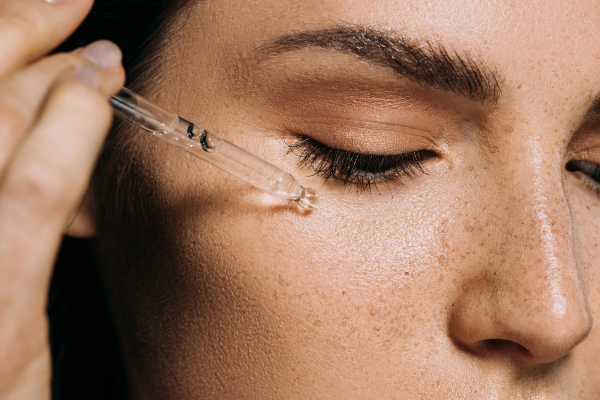Lasers, botox, and microneedling, oh my! Learn which treatments are worth your money and the recovery time that comes with them.
Waking up in the morning is often the time we find ourselves most critical of our appearance. Of course you have bed head and squinty eyes. We forget that we’ve been horizontal for eight hours. Rather than trying to overcorrect with makeup tricks, remember that your skin needs a little time to come to life, just like your brain does first thing in the morning.
After you’ve had a cup of coffee and checked a few emails, you might wander back to the bathroom mirror to get ready to face the day. You notice a few wrinkles here, some undereye bags there, and the beginnings of crow's feet at the corners of your eyes. But does that mean it’s necessarily time for surgical intervention? That all depends on how far you’re willing to go in the pursuit of beauty.
A GOOD FOUNDATION GOES A LONG WAY
Nobody’s knocking surgical intervention when it’s done the right way and for the right reasons. Celebrities like Dolly Parton and Katy Perry have openly discussed why it was the right choice for them. Only you know what those reasons are. But one thing is certain: the best way to ensure you’re doing right by your skin in the first place is the daily routine you perform to support it.
A good foundation, and we don’t mean the concealer kind, is key. Reinforce the building blocks of good skin with products that were designed to support your microbiome. Taking an inside-outside approach to healthy skin will set the stage for how your skin reacts to the effects of UV exposure, pollution, and aging. Taking oral probiotics and adopting a probiotic skincare routine is one of the best insurance policies you can provide your skin-obsessed future self.
THE MOST COMMON PROFESSIONAL SKINCARE TREATMENTS
These fancy-sounding skincare procedures are making big promises. But are they delivering? And most importantly, are they safe? When you first start your research, you’ll come across several options and it can feel pretty overwhelming at first. Here’s the rundown of what they are, how they work, and whether or not they’re worth their weight.
BOTOX
This is a procedure that uses Botulinum, a toxin that is injected in order to induce botulism. The process stops the movement of specific muscles and nerves, rendering them immobile. Cosmetically, it’s used for eyebrow lifts and to reduce the appearance of wrinkles. The price range is between $200-300.
WORTH IT OR WALK AWAY? It’s only a temporary solution and the results gradually fade after a few months. For at least 6 hours post-procedure, you can’t exercise or lie down. Taking Ibuprofen could increase bruising. Your face will feel a little “frozen” afterwords, which in most cases, is just a temporary side effect. Some studies have shown the side effects to be minimal, while more long-term studies have shown very different results. Botulism can spread to other parts of the body causing paralysis, difficulty swallowing, respiratory problems, and even death. The more adverse side effects tend to be relative to hypersensitive reactions to the injection or an injection that wasn’t administered correctly.
DERMAL FILLERS
This is the second most popular nonsurgical cosmetic procedure. It’s the injection of gel-like substances that plump up the skin above the injection site. Fillers are used to plump wrinkles, smooth lines, restore volume in your face, and sometimes make your face more symmetrical. The most common injection substance is hyaluronic acid, but other options include calcium hydroxylapatite, polymethyl methacrylate (PMMA), and poly-L-lactic acid (PLLA). A more serious procedure injects your own purified body fat after undergoing liposuction. The effects can last from 3 months to about 5 years, costing around $500-$600 (sometimes more) per injection.
WORTH IT OR WALK AWAY? Injecting dermal fillers can cause swelling or bruising post-procedure that generally subsides after a few days. More serious side effects have been shown to occur as well, including inflammation, the formation of nodules, scarring, and the unintentional migration of the filler. Whatever you do, don’t DIY. There has been a rise in black market do-it-yourself dermal fillers that has caused an online frenzy of “Don’t do what I did!” horror stories. If you choose to do it, go with a professional.
MICRONEEDLING
A minimally invasive treatment, microneedling is when your skin is pricked with tiny needles to stimulate collagen production. The primary uses are for reducing the appearance of scars and uneven texture, fading stretch marks, and improving the overall texture of the skin. It doesn’t carry the same risks for discoloration that other treatments such as heat, injectables, and light therapy might, so it’s a better choice for those with darker complexions. Results can take up to 6 months and it generally requires more than one go. Each treatment runs about $150-$400.
WORTH IT OR WALK AWAY? Studies show it to be effective with the added benefit of less downtime compared to similar treatments. Common side effects include swelling, tightness, redness, dryness, and flaking of the skin. These are normal reactions and will subside after a week or two. Again, this is one best left to the professionals. There’s an emerging trend of home microneedling kits, but the risks are many, including skin tearing, scarring, and hyperpigmentation.
If you decide to take your chances on fillers, needles, or injections, just be sure to do your research. Ask around and take your time finding a reputable professional who’s right for you and confident in treating or improving the skin condition you’re wanting to address. In the meantime, focus on adopting a long-term skincare routine that’s scientifically proven to be beneficial to your skin and sustainable as a daily practice. Probiotic skincare fits the bill. And thankfully, it doesn’t require taking sick days from work to recover.








